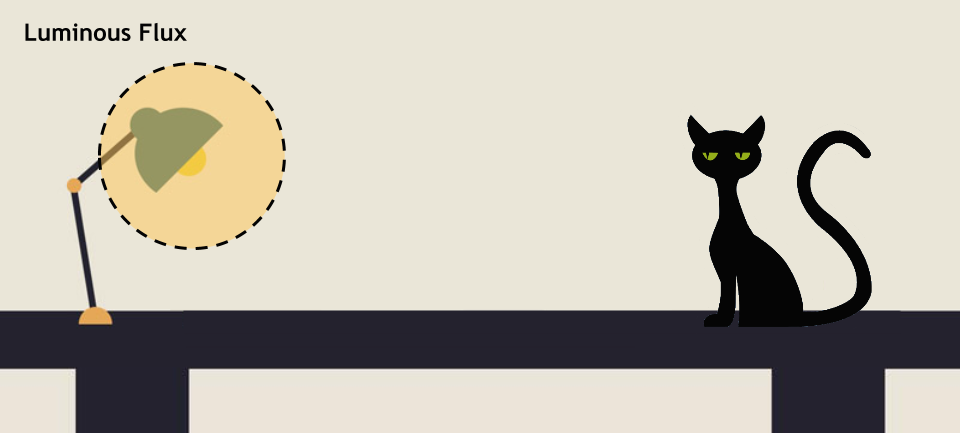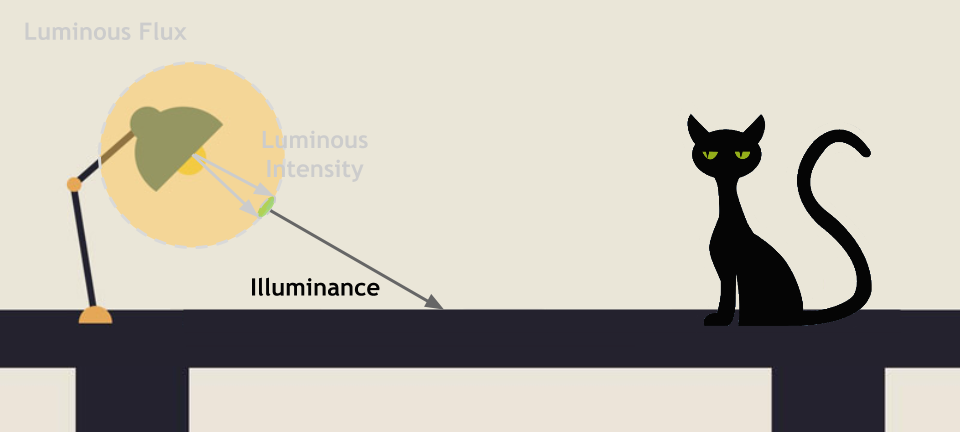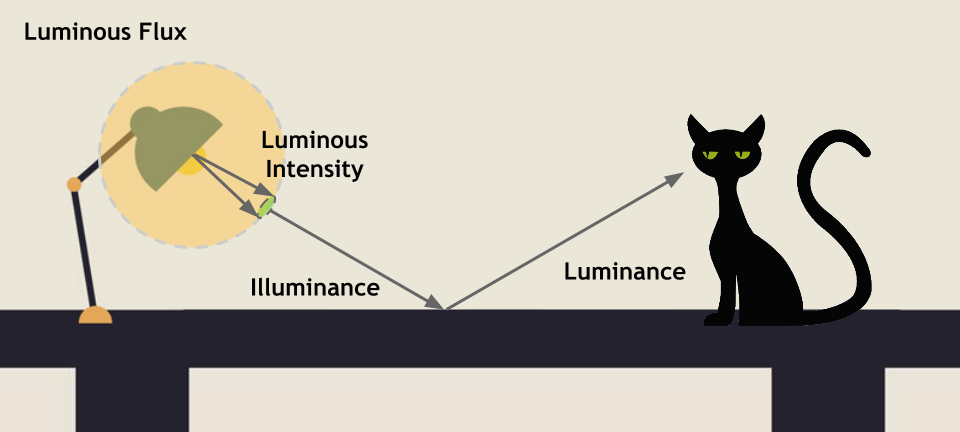Luminance, Illuminance, and All That

What’s the difference between luminance and Illuminance?
Which unit should I use to describe the brightness of my light bulb? Lumen, Candela, or Lux?
If you find yourself asking these questions, this article is for you. The following provides a summary of these confusing terms. In short, there are really only 4 quantities (and their accompanying units) that you need to know, and we’ll go through them one by one.
Let’s start with a lamp. (and Elizabeth the cat)
1. Luminous Flux

When you buy a light bulb, the first (and probably the only) thing you want to know is how much light comes out of the light bulb. This is expressed with luminous flux (or luminous power), which measures the total amount of power of visible light emitted from the light source.
The unit is lumen.
2. Luminous Intensity

Ok, so now we know how much light the lamp emits in total, but what if we just want to know how much light it’s emitting at a particular direction? This can be represented with luminous intensity, which is simply luminous flux per unit solid angle.
The unit is lumen/sr, or candela.
3. Illuminance

Forget about the lamp here; what if we want to know how much light falls on the desk? (the light can come from the lamp or other light sources) This can be measured with illuminance, which is luminous flux per unit area.
The unit is lumen/m^2, or lux.
4. Luminance

Why do we care how much light falls on a surface? Because that’s how we see every object in the world! Luminance is the measure of how much light can be detected by our eyes looking at a surface at a particular angle, or roughly how bright the surface appears to Elizabeth. The formal definition of luminance is luminous flux per unit solid angle per unit area.
The unit is lumen/(m^2·sr), or cd/m^2.
Summary
Here’s the final chart depicting all 4 quantities:

F.A.Q.
So…we use illuminance to measure light hitting a surface, and luminance for light coming from a surface to our eyes? Why use 2 different quantities for them?
Illuminance is indepedent of the surface, so it doesn’t matter whether a light is hitting a desk or a wall; the illuminance is the same.
On the other hand, since different objects have different relfection or refraction rates, luminance off a desk is probably different from luminance off a wall.
Does the everyday term “brightness” correspond to any of these quantities?
Brightness is sort of related to luminance, but it’s not used as a quantitative measure. We mostly use the term “brightness” as a subjective, qualitative measure of how bright something appears, which is often affected by contrast. For example, your phone screen looks super bright in a dark room, while you can barely see it in direct sunlight.
Wait, if luminous flux measures the amount of power, why isn’t the unit watt?
Not the amount of power, it’s the amount of power of visible light to our eyes, which is only a small part of the total spectrum of electromagnetic waves. Radiant flux, on the other hand, actually measures all radiant energy, so the unit is in Watt.
Remind me which quantity I should keep in mind when purchasing light bulbs again?
Lumen. By the way, people used to compare lights by watts, but nowadays light manufacturers are able to make lights with higher lumen at the same watts.
References
[1] Wikipedia on luminous flux.
[2] Philips Lighting video on luminance vs illuminance.
[3] Cleveland.com on light bulb packages.
[4] StudioJPIC on the same topic.
